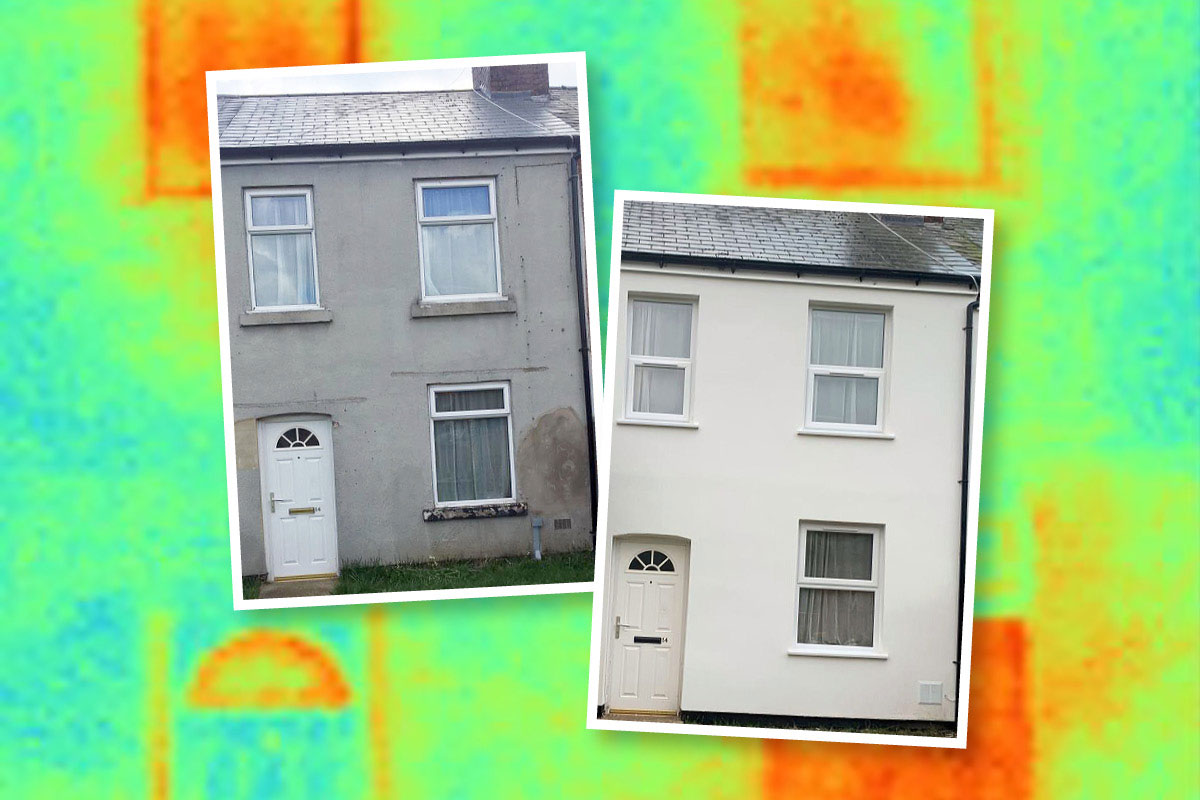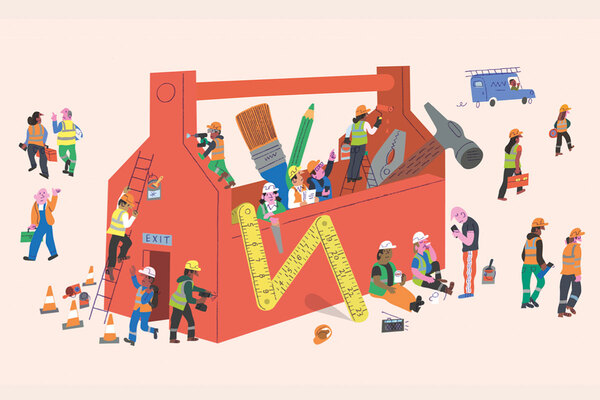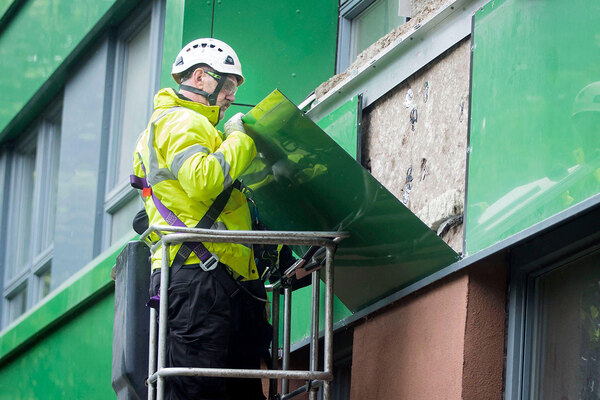Tackling the retrofit backlog in social housing
When planning deep retrofit schemes, social landlords are upgrading other areas, such as bathrooms. Inside Housing finds out about the challenges from John Mortimer at Grant Westfield
In association with:
![]()
As social landlords work their way through extensive retrofit programmes to bring homes up to energy efficiency and building safety standards, cost and time pressures build by the day.
With bathroom renovations forming an important part of these works, Inside Housing talks to John Mortimer, sales director at Grant Westfield – the bathroom panel provider which manufactures panels for Multipanel – about the challenges the sector faces.
What are the key issues social landlords have to grapple with when planning to update large numbers of properties?
One of the biggest issues is disruption to tenants. Specifically, how do landlords complete these necessary works without impacting tenants’ daily lives? With large volumes of work to carry out, this is a real concern.
On top of this, providers are trying to ensure they have availability of the right skills required for the job, which isn’t easy. We’re all aware that there is a huge skills shortage across a number of trades. This is making it very difficult for providers to plan projects over the long term – particularly when you consider the added problem of restricted material availability, which is a UK-wide issue across the construction sector.
Bathroom renovations can form a large part of repairs and maintenance work for housing associations. Can you explain why?
Bathrooms traditionally require specialist trades to carry out updates and maintenance, so they often get left until a tenant moves out. Bear in mind as well that these are very busy areas of the home, with a lot of traffic, running water and electrics, which can all cause issues.
Bathrooms do require regular maintenance to remain in a good condition. If they’re poorly maintained over the longer term, they can’t be repaired. Instead, the provider will need to rip the bathroom out and replace it. If a bathroom has been run down over a long period when the tenant leaves, the housing association will likely have to renew the bathroom rather than repair it, which has time and cost implications.
Did the pandemic lockdowns affect bathroom renovations at all and, if so, how?
COVID-19 had a huge impact right from the first lockdown. Obviously, planned schemes had to stop straight away. But then, over the course of the pandemic, lockdown restricted access to properties and the number of properties you could enter. On top of that, right up until recently really, COVID-19 affected both the availability of staff due to sickness and also the ability to access a home if somebody in the home tested positive for COVID-19. So it’s caused a huge issue with access and labour availability.
How is repairs work affected by cost inflation and the ongoing labour shortages across the UK?
Increased costs are being felt across pretty much all building products. In bathrooms, this has been particularly acute where imported products are used. If products are coming from the Far East, overall costs have increased hugely across those materials, but that has been exacerbated by massive increases in transport costs.
Then there are labour shortages. These were an issue even before the pandemic, because of the skills shortage we had within the tiling sector in the bathroom trade. The pandemic exacerbated this. A huge rush in homeowner renovations were fishing from the same pool of talent, making the sourcing of skilled labour for the social housing sector even more difficult.
The combination of these issues has resulted in really high above-budget costs for bathrooms and long lead-in times.
What are some of the ways providers are adapting to these time and cost pressures?
Time and cost go hand in hand, so finding ways to navigate these challenges is a focus for most providers. The longer it takes you to complete a job, the greater the cost and the longer it’s going to take you to complete your planned work schedule.
Unfortunately, some providers have no choice but to extend their planned works, or they have to live with a large backlog of void properties. At the current rate they’re clearing bathrooms, they’re limited to how many bathrooms they can complete per week or per year.
Do you see this changing in the near future?
Hopefully we’re coming out the other side of the pandemic, but without changing the specification or working differently, the labour shortage means there’s not enough skilled teams available to really eat into the current backlog. I’d imagine, if we maintain that spec and go at this current rate, the backlog is going to remain for some time.
In numbers
£30
Reduction in cost per sq m, using Multipanel
14
Reduction in trade hours per bathroom, using Multipanel
How is Multipanel helping to relieve some of these pressures for providers?
Cost and time pressure are the two areas where our products can relieve pressure. We work with the sector to tackle this issue by changing the specification to replace traditional bathroom tiles with Multipanel. This removes the need for specialist wet trades in the bathroom and reduces the time taken to renovate a bathroom from three days to one.
Recent case studies show that you can reduce cost by £30 per sq m and reduce the time by 14 trade hours per bathroom. This would work out as an average cost saving of £200 per bathroom, which is significant when you think that some of the larger providers are renovating between 1,000 and 3,000 bathrooms a year.
We also have an online training programme that providers’ in-house staff, such as general labourers or plumbers, can complete ahead of installation. This can be particularly helpful if a provider has a large number of people who need to be trained. It only takes 30 minutes to finish; after that, the fitters are good to go.
Are there any wider benefits for tenants?
The low maintenance of the panels, compared with traditional tiles, is a real benefit. There’s no grout to maintain, so tenants can keep the bathroom in pristine condition. One resident recently told her landlord that it was a “bathroom she could be proud of”, which aligns with today’s climate of ensuring that tenants feel a sense of pride in their homes.
In terms of installation, these works can be carried out with minimum disruption. This is a big consideration, particularly if providers are carrying out a wide range of retrofit works. A tenant could go out to work just like any other normal day and, when they get back, their bathroom will be complete. From a customer satisfaction point of view, this is another real benefit.
Are there any other considerations?
In terms of cost pressure, we manufacture all our products in the UK and Ireland – 10,000 a week – and source our raw materials in the UK, which is an important consideration in terms of availability.











